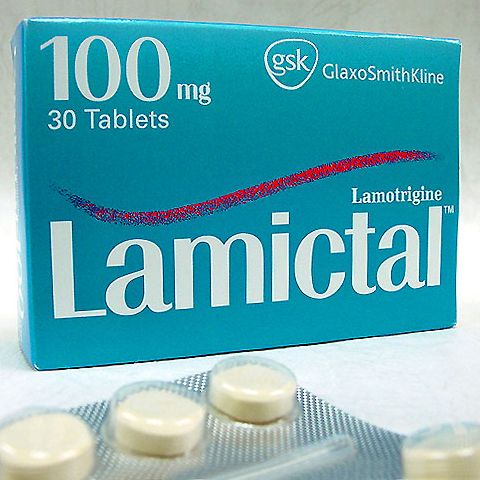Top Class Actions’s website and social media posts use affiliate links. If you make a purchase using such links, we may receive a commission, but it will not result in any additional charges to you. Please review our Affiliate Link Disclosure for more information.

What is Lamictal?
Lamictal
, also known under the generic name lamotrigine, is an anticonvulsant medication approved by the FDA for a few different uses.
It can be used to treat epileptic seizures in both adults and children, and Lamictal is also the first medication since lithium to be approved for maintenance treatment of bipolar disorder in adults. In addition to its anticonvulsant properties, Lamictal also stabilizes mood; studies show it may also reduce symptoms of depressive episodes in bipolar disorder.
However, as its label reflects, Lamictal can lead to the development of skin rashes serious enough to require hospitalization, including Stevens Johnson Syndrome (SJS) and its related condition Toxic Epidermal Necrolysis (TEN). These conditions, while fortunately rare, develop as side effects of medications such as Lamictal.
What is Lamictal SJS and TEN?
The first signs of SJS often resemble symptoms of the flu or an upper respiratory infection. These symptoms may include fever, cough, runny nose, sore throat or irritated eyes. Within a few days, the more characteristic symptoms of SJS begin, such as a rash with discoloration that breaks out on the trunk and eventually spreads to the face and limbs.
Subsequently, blisters begin to form within the rash area. These blisters enlarge and join each other to form large areas of skin that may come loose and peel away, exposing the vulnerable lower layer of skin beneath them.
The amount of skin area affected this way is what makes the distinction between SJS and TEN. Where less than 10 percent of the surface area is detached, the condition will be referred to as SJS; if more than 30 percent detaches, it’s TEN. Detachment affecting between 10 and 30 percent of skin area is considered overlap.
Similar symptoms can affect the mucous membranes in the mouth, eyes, esophagus, genitals or upper respiratory tract. Eye symptoms may progress into full-on conjunctivitis.
Treatment for SJS and TEN requires a hospital stay, cessation of the medication that may have caused the condition, and ongoing maintenance of symptoms until the body manages to heal itself.
Even if treatment is successful, SJS and TEN can leave the patient with long-term complications like scarring and discoloration of the skin, loss of finger and toenails without regrowth, or eye symptoms like conjunctivitis or corneal aberrations that can degrade vision, sometimes resulting in blindness.
The current label for Lamictal carries a warning about the possibility of “serious rashes” requiring hospitalization. Some rashes reported in conjunction with Lamictal treatment developed into SJS or TEN.
Nearly all life-threatening SJS or TEN cases reported occurred within two to eight weeks of beginning treatment with Lamictal; however, some cases occurred even several months after initiation of treatment.
Since it cannot be predicted whether a benign rash will develop into a more dangerous condition like SJS, the label recommends Lamictal should ordinarily be discontinued at the first sign of a rash, as long as the rash is clearly not related to the drug.
Evidence suggests that taking valproate in conjunction with Lamictal increases the risk of life-threatening rash. Valproate is another drug used to treat seizure disorders, sometimes administered in combination with other drugs.
If you or someone you know developed SJS or TEN after taking Lamictal, you may be eligible for compensation from the drug’s manufacturer.
Do YOU have a legal claim? Fill out the form on this page now for a free, immediate, and confidential case evaluation. The Stevens Johnson Syndrome attorneys who work with Top Class Actions will contact you if you qualify to let you know if an individual lawsuit or class action lawsuit is best for you. [In general, SJS lawsuits are filed individually by each plaintiff and are not class actions.] Hurry — statutes of limitations may apply.
ATTORNEY ADVERTISING
Top Class Actions is a Proud Member of the American Bar Association
LEGAL INFORMATION IS NOT LEGAL ADVICE
Top Class Actions Legal Statement
©2008 – 2024 Top Class Actions® LLC
Various Trademarks held by their respective owners
This website is not intended for viewing or usage by European Union citizens.
Get Help – It’s Free
Help for Victims of Stevens Johnson Syndrome
If you or a loved one were diagnosed with Stevens Johnson Syndrome (SJS) or toxic epidermal necrolysis (TEN) after taking a prescribed or over-the-counter medication, you may be eligible to take legal action against the drug’s manufacturer. Filing an SJS lawsuit or class action lawsuit may help you obtain compensation for medical bills, pain and suffering, and other damages. Obtain a free and confidential review of your case by filling out the form below.
An attorney will contact you if you qualify to discuss the details of your potential case at no charge to you.
Oops! We could not locate your form.












